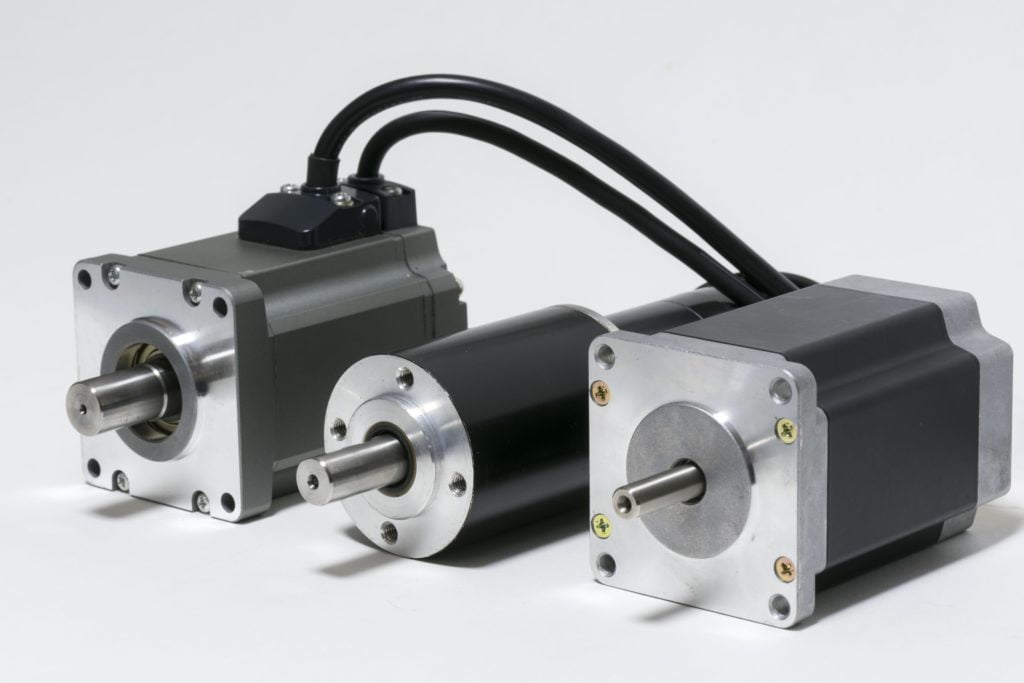Page Contents
ToggleServo motor vs stepper motor, which is better servo or stepper motors?
Stepper motors versus servo motors
In a growing number of high-standard industrial automation applications, advances in technology are changing the performance-to-cost ratio between stepper motors and servo motors. With the adoption of closed-loop technology, closed-loop stepper motors offer users excellent accuracy and efficiency, with the performance of a servo motor and the low cost advantage of a stepper motor. Lower cost stepper motors are gradually penetrating applications that would otherwise be dominated by high cost servo motors.
Servo motor vs stepper motor
According to conventional wisdom, servo control systems perform better in applications that require speeds in excess of 800 RPM and high dynamic response. Stepper motors are better suited for applications with lower speeds, low to medium acceleration, and higher holding torque. So what is the basis for this conventional wisdom about stepper motors and servo motors? Let’s analyze it in detail below.
1、Structure: Servo motor vs stepper motor
Stepper motors use stepping to rotate, using a magnetic coil to gradually pull a magnet to get from one position to the next. To make the motor move 100 positions in any direction, the circuit needs to perform 100 step operations on the motor. Stepper motors use pulses to achieve incremental motion, allowing precise positioning without the use of any feedback sensors.
The servo motor’s method of motion is different. It has a position sensor attached to the magnetic rotor – i.e., an encoder – that will continuously detect the exact position of the motor. The servo monitors the difference between the motor’s actual position and the commanded position and adjusts the current accordingly. This closed-loop system keeps the motor in the correct motion.
2、Simplicity and cost: Servo motor vs stepper motor
Stepper motors are not only less expensive than servo motors, but they are also simpler to commission and maintain. Stepper motors are stable at standstill and hold position (even with dynamic loads). However, if certain applications have higher performance requirements, more expensive and complex servo motors must be used.
3、Positioning: Servo motor vs stepper motor
In applications where the exact position of the machine needs to be known at all times, there are important differences between stepper motors and servo motors. In open-loop motion applications controlled by stepper motors, the control system assumes that the motor is always in the correct state of motion. However, after a problem is encountered, such as a stalled motor due to a stuck part, the controller is unable to know the actual position of the machine, resulting in an out-of-position. The closed-loop system of the servo motor itself has an advantage: if it gets stuck by an object, it will detect it immediately. The machine will stop operating and will always be out of position.
4. Speed and torque
The difference in performance between stepper motors and servo motors stems from their different motor design schemes. Stepper motors have much more poles than servo motors, so a full revolution of a stepper motor requires much more winding current exchanges, resulting in a rapid drop in torque as the speed increases. In addition, if the maximum torque is reached, the stepper motor may lose its speed synchronization function. For these reasons, servo motors are the preferred solution in most high-speed applications. In contrast, the higher number of poles in a stepper motor has an advantage at low speeds, when the stepper motor has a torque advantage over a servo motor of the same size.
As the speed increases, the torque of the stepper motor will decline
5、Heat and energy consumption
Open-loop stepper motors use a fixed current and can emit a lot of heat. Closed-loop control provides only the current required for the speed loop, thus avoiding motor heating problems.
Servo motor vs stepper motor comparison summary
Servo control systems are best suited for high-speed applications that involve dynamic load changes, such as robotic arms. Stepper control systems, on the other hand, are better suited for applications that require low to medium acceleration and high holding torque, such as 3D printers, conveyors, and sub-axes. Because stepper motors are cheaper, they can reduce the cost of automation systems when used. Motion control systems that need to take advantage of the characteristics of servo motors will have to prove that these higher cost motors are worth their weight in gold.




